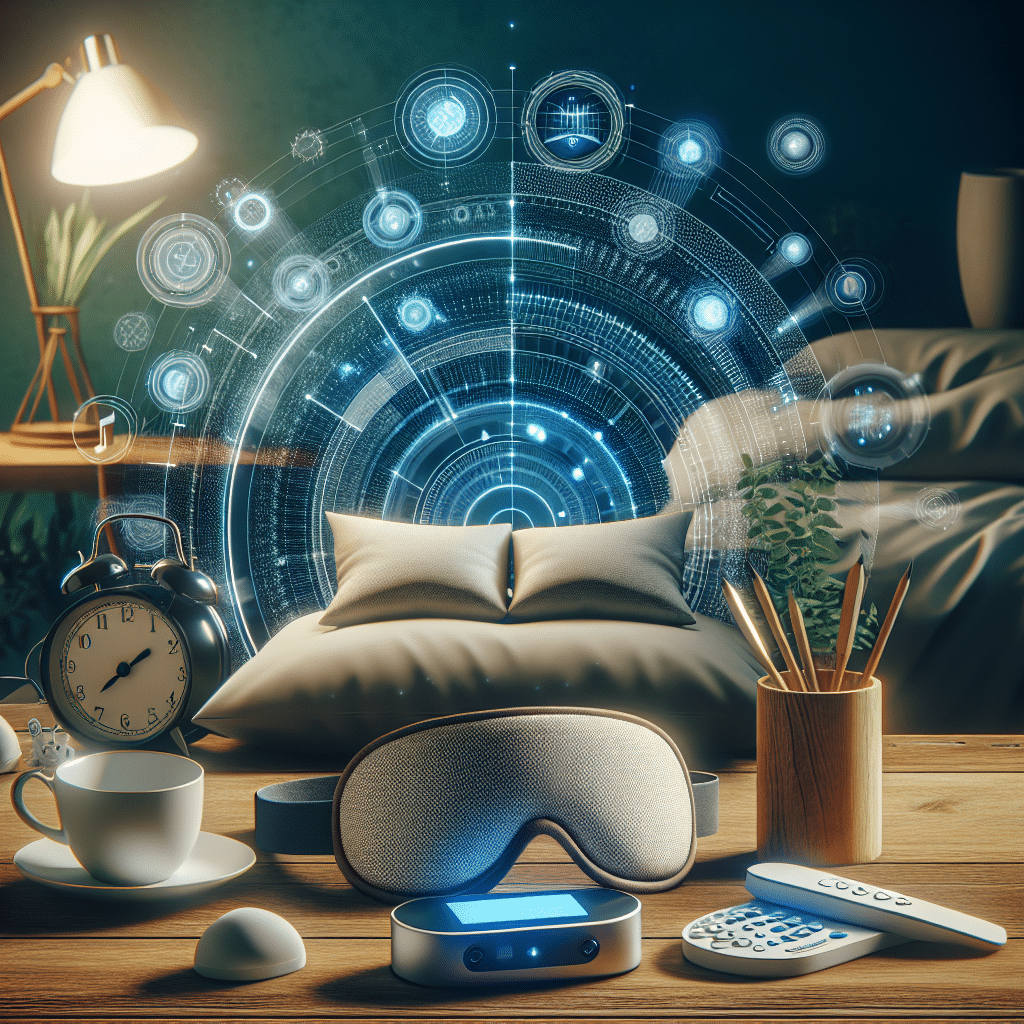Understanding Napping: The Science Behind Restorative Sleep
Napping has been shown to enhance cognitive function, improve mood, and boost productivity. However, the effectiveness of a nap can depend significantly on its duration, timing, and your individual sleep needs. Modern technology provides a plethora of solutions for optimizing naps, making the practice more efficient and beneficial.
The Ideal Nap Duration
Research indicates that the optimal nap duration for enhanced alertness and cognitive performance is between 10 to 30 minutes. Shorter naps prevent sleep inertia, the groggy feeling that can result from waking during deeper sleep stages. For those needing more recovery, a 90-minute nap can allow a complete sleep cycle, reducing sleep inertia and optimizing memory consolidation.
The Role of Sleep Cycles
Understanding sleep cycles is crucial for nap optimization. A typical sleep cycle lasts about 90 minutes and consists of different stages, including light sleep, deep sleep, and REM sleep. Technology can help you track these cycles using various applications and wearable devices that monitor your sleep patterns, so you can time your naps more effectively.
Technology for Tracking Sleep Patterns
Sleep Trackers
Wearable devices, like smartwatches and fitness trackers, can provide insights into your sleep quality. These devices typically measure heart rate variability and movement during sleep and can offer suggestions on optimal napping times based on historical sleep patterns.
Mobile Apps
Several apps are designed for sleep tracking and nap optimization. Apps such as Sleep Cycle and Pzizz can help monitor your sleep patterns and suggest the best times for napping based on your sleep debt and cycles. Many of these applications can provide alerts, ensuring you wake up at the right time during your nap.
Optimal Napping Environment
Creating a conducive environment for napping is essential. Smart home technology can enhance your napping experience significantly.
Smart Lighting
Dimmable smart lights can help create a sleep-friendly atmosphere. Lowering the lights can increase melatonin production, making it easier to drift off into a restful nap. Use smart bulbs that can adjust color temperature to mimic natural light.
Noise Control
Utilizing noise-canceling technology or white noise machines can reduce disruptive sounds and enhance your ability to fall asleep. Many mobile applications offer customizable soundscapes designed specifically for nap settings.
Temperature Regulation
Maintaining a comfortable temperature is crucial for sleep quality. Smart thermostats can automatically adjust the temperature of your environment, ensuring your napping space is neither too hot nor too cold.
Techniques for Effective Napping
Power Naps
A power nap lasts about 10 to 20 minutes. It’s beneficial for a quick refresh and can improve alertness and performance. Setting a timer on your smartphone or smart speaker ensures you wake before entering deeper sleep stages.
Coffee Naps
Combining caffeine consumption with napping can enhance alertness. Drink a cup of coffee just before your nap, leveraging the time it takes for caffeine to kick in (about 20-30 minutes) for maximum efficiency. This technique has gained traction due to studies showing improved performance and alertness post-nap.
Smart Alarm Clocks
Smart alarm clocks with sleep tracking can wake you during light sleep, improving how you feel upon awakening. Some advanced models use sleep cycle monitoring to calculate the best time to wake you up based on your nap duration and existing sleep patterns.
Cognitive Behavioral Techniques
Utilizing technology, you can also engage in cognitive behavioral techniques to optimize napping. Apps like Headspace or Calm offer guided meditations and relaxation exercises designed to help you fall asleep faster during your nap period.
Breathing Exercises
Integrating breathing techniques with nap time can further enhance relaxation. Smart speakers can guide you through deep breathing exercises, aiding in quicker sleep onset during your power nap.
Visualization Techniques
Using visualization methods to promote relaxation can also be beneficial. Many meditation apps integrate this feature, enabling you to create a mental environment conducive to restful sleep.
Adapting to Lifestyle Changes
With technology, you can adapt your napping habits to your lifestyle. Use scheduling apps like Google Calendar to block out dedicated nap times, ensuring that you’re not overworked and that you prioritize your rest.
Remote Work Considerations
Remote work has changed how we view breaks and rest. Optimize your home office environment for napping by reinforcing boundaries on work time versus rest time. Use virtual timers or reminders via digital assistants to signify when it’s time for a nap.
Integrating Health Metrics
Wearable technology can assist in understanding how napping improves your overall well-being. Track metrics such as heart rate, energy levels, and mood before and after naps to analyze their effectiveness. This data can help customize your napping strategy.
Health Apps
Integrate health tracking apps that allow you to log your naps alongside other wellness metrics to understand their impact on your real-life productivity and health.
Experimenting with Nap Schedules
Slightly adjust your nap schedule until you find an optimal time that suits your personal rhythm. Some individuals benefit from afternoon naps, while others may find a midday rest more effective. Monitor how different times affect your alertness and productivity levels.
Addressing Common Myths
Utilizing technology helps address common misconceptions surrounding naps. For example, the notion that napping is for the lazy is debunked by evidence showing that many successful individuals incorporate strategic napping into their routines.
Conclusion: Leveraging Technology and Science
Incorporating technological tools into your napping routine can lead to increased productivity and improved well-being. By understanding sleep cycles, leveraging smart technology, and implementing effective napping techniques, you can enhance your overall quality of life. Embrace technology to foster better rest, and in turn, better performance in your daily activities.
